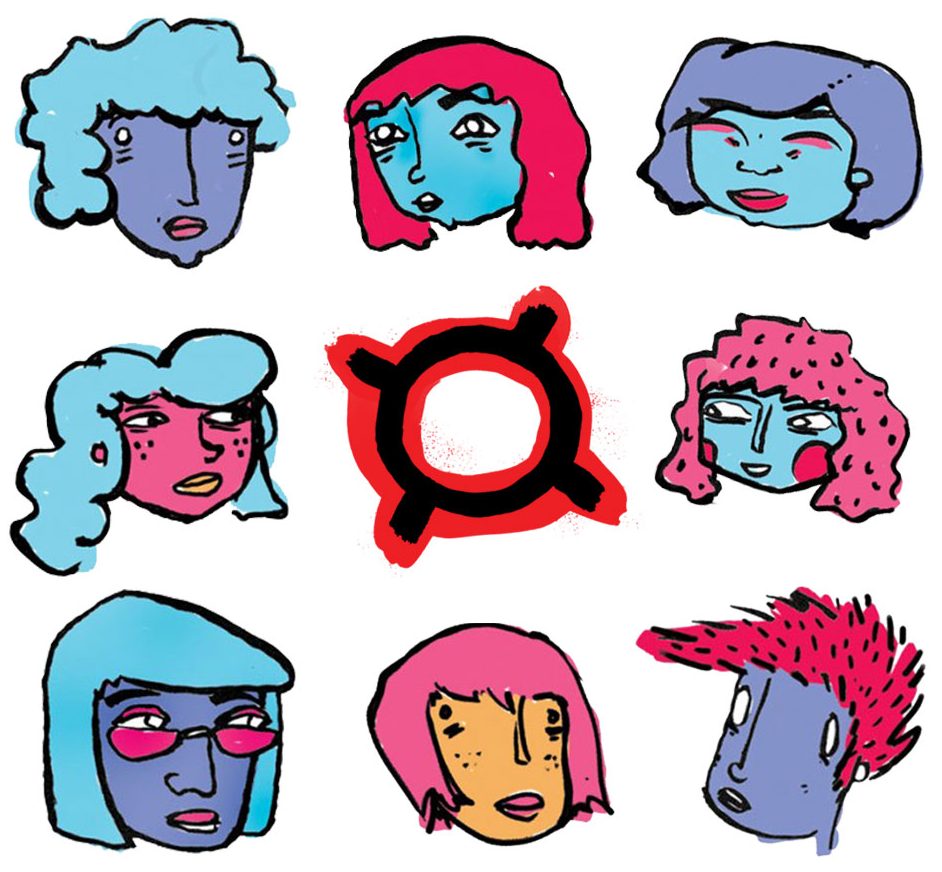You are visiting Liisbeth’s archives!
Peruse this site for a history of profiles and insightful analysis on feminist entrepreneurship.
And, be sure to sign up for rabble.ca’s newsletter where Liisbeth shares the latest news in feminist spaces.

There’s a new form of domestic abuse, and so-called “smart” home devices are the weapons.
And, yes, women are more likely to be affected by this perverse use of technology. Here’s how it works: An abuser can lock a victim into her own home using web-enabled locks, and monitor her every move via video security systems. An abuser can expose a victim to extreme heat or cold by remotely controlling a smart thermostat, or wake her up in the middle of the night by blasting music with a remote control.
Smart home abuse is just one way in which technology is disproportionately harmful to women. A few others: Machine learning algorithms can reinforce gender biases inherent in the datasets used to train them, so recruiting tools for tech workers can be biased against women. Crash dummies are based on male bodies, so car safety tests don’t account for female anatomy. Voice recognition software is more likely to understand a male voice. Mapping apps can provide the fastest route to any destination, though not the safest one. And tech gadgets at our service often have female voices, reinforcing gender power imbalances.
Tech’s dark side arises from who designs and builds it—and who’s excluded from the process. When diverse voices are shut out, so too are diverse ideas, perspectives, and values.
According to a 2019 report by Women in Communications and Technology, men in technology outnumber women by a ratio of four to one. Women who manage to break into the sector wield significantly less power. They earn less than their male counterparts and are less likely to be promoted to leadership positions. Little wonder they’re more likely to flee the industry.
The need to include diverse voices in the innovation process propelled Sarah Saska to found Feminuity, a consulting firm that helps tech companies become more diverse and inclusive. Though her firm’s name blends the words “feminism” and “ingenuity,” Saska wants to do more than just get more women hired at tech workplaces.

Feminuity’s version of feminism is decidedly intersectional. When clients come to Saska saying, “We need to hire more women,” the 30-something entrepreneur takes the conversation deeper. “The goal of 50 percent representation of women in any space is not only shortsighted but also wildly essentialist. You could end up hiring only white, cisgender, heterosexual, able-bodied, resourced women. It’s such a limited frame, and we’ll be no further ahead.”
Rather, an intersectional approach takes into account people’s overlapping identities and experiences. For example, black women, disabled women, gender non-conforming people, and women who care for children and elders may face specific obstacles to employment and promotion. Until a company removes those barriers, it will not achieve equity.
It’s an approach that’s been missing from tech workplaces, says Saska, who grew up in a feminist home and earned a PhD in gender studies and feminist research at Western University in London, Ont. While researching innovation theory for her degree, she began to realize a huge gap. “There wasn’t anything related to humanness, such as gender or race,” she says. “It was absent. It didn’t make sense to me. How could we not talk about the human side of things?”
Wanting to apply her understanding to the business world, Saska launched Feminuity in 2014, along with innovation expert Andrea Rowe (who has since left the company). A 2016 Studio Y fellowship at MaRS Discovery District helped Saska hone her entrepreneurship and leadership skills, build networks, and translate her academic knowledge into business practices.
Says Saska: “I got into this space because, right now, we’re at an inflection point. Some tech companies are larger than entire countries. Tech companies have power, and they’re outpacing our laws and policies and playing in new and grey spaces. Tech can exacerbate or make things better when it comes to equity.”
In Canada’s tech sector, she says the need for diversity and inclusion work is especially urgent. To her knowledge, the massively successful e-commerce platform Shopify is the only tech company with a senior level diversity leader and a team, while the US has many more companies investing in this area. “Canadian tech talks a lot about how ‘diversity is our strength,’ and I find that frustrating,” says Saska. “Diversity is not a given. It’s something that we must design for deliberately and intentionally. There’s a lot that needs to happen before we can say diversity is really our strength.”
Now in its fifth year, Feminuity employs between 10 and 20 people at any given time, contracting specialists as needed to work primarily with small and medium-sized companies that may not have the resources to hire a full-time employee dedicated to diversity and inclusion, yet know they need help.
The process starts when Feminuity conducts a holistic survey of the business, collecting quantitative and qualitative data about processes, physical space, products, and policies.
The quantitative data is decidedly intersectional, with survey questions designed to create a layered picture of how women with multiple identities experience the workplace, helping leaders understand, say, the challenges of a racialized single mother with child care issues.
To gather qualitative information, Anisha Phillips, an associate consultant at Feminuity, conducts video interviews with employees who opt in. Phillips says participants sometimes assume they’ll be asked if they’ve experienced discrimination. Rather, open-ended questions prompt them to describe what they like and don’t like about their workplaces.
“Inclusion has many different aspects,” explains Phillips, adding it doesn’t always look the way people expect it to. In training workshops, the Feminuity team refers to an article that describes 34 diversity characteristics, including gender, sexual orientation, race, religion, language, physical ability, cognitive ability, mental health, social roles within the home, and political beliefs, to name just a few.
After Saska’s team gathers data and analyzes it through an intersectional lens, they co-design strategies with clients, help build an internal steering committee, provide resources and training, and prepare the company to implement the plan, which typically takes six months to a year, though some engage in the process for several years.
Feminuity’s approach may touch on any aspect of business, not just hiring and human resource policies. It could mean diversifying a company’s supply chain to include Indigenous contractors, for example, or improving how work spaces function for people with disabilities, or closing salary gaps that may exist between a company’s most junior and senior employees.
In some cases, Saska may act as a part-time chief diversity officer, a more affordable way to build inclusion into leadership for companies that don’t have the resources to hire a full-time employee for the role. But her ultimate goal is to build internal capacity to embed diversity and inclusion practices in a company’s day-to-day culture and operations.
The key to embedding equity lies in helping leaders see the business through a lens of “futurism,” which, to Saska, means being thoughtful about the long-term impacts of a product or service for everyone—not just the dominant group.
“Is there a chance it could exacerbate inequities that already exist?” she asks. “If your goal is shortsighted, if you just want to get wealthy, there’s always a shadow side. You’re going to benefit some people—those who have dominant identities, those with power—and you’re going to leave others behind.”
Saska sees more tech startups and scaleups baking social justice into their way of doing business from the very beginning. It doesn’t take a lot of resources, she says, but does take a sense of intention. Small startups on small budgets can access Feminuity’s open-source resources—offered free on its website—to create inclusive job descriptions, interview practices, benefits packages, organizational structures, sexual harassment policies, and compensation packages.
Embracing diversity can avoid expensive and complex problems down the road. Saska cites Uber as an example of how failing to consider the needs of women can create a flawed business model, as the money-losing company is plagued by accusations that the car-sharing app makes users vulnerable to sexual assault by contract drivers.
As for Feminuity’s internal hiring process, Phillips described it as “a conversation” rather than about credentials or degrees. She says Saska wanted to know, what her research was about, what types of issues were of interest to her. “It was about getting to know me as a person,” she says.
Saska describes the company culture as being in a continual process of growth. The team is moving to a new space in Toronto and hiring new team members, some of whom will work remotely. That has spurred her to study inclusive practices for remote teams, which she’ll test on her own group.
“We are trying to figure out, embody, and actualize the work we do with our clients,” says Saska. The goal is to distill social justice concepts into habits of thought for groups who create technologies, and that’s an ongoing project.
Creating researched and inspirational content to support and advocate for feminist changemaking takes hundreds of hours each month. If you find value and nourishment here, please consider becoming a donor subscriber or patron at a level of your choosing. Priced between a cup of coffee or one take out salad per month.
Support LiisBeth

This article was generously sponsored by Startup Toronto!
Related Articles
https://www.liisbeth.com/2019/04/26/where-are-the-women-in-canadas-women-in-tech-venture-fund/
You are visiting Liisbeth’s archives!
Peruse this site for a history of profiles and insightful analysis on feminist entrepreneurship.
And, be sure to sign up for rabble.ca’s newsletter where Liisbeth shares the latest news in feminist spaces.





